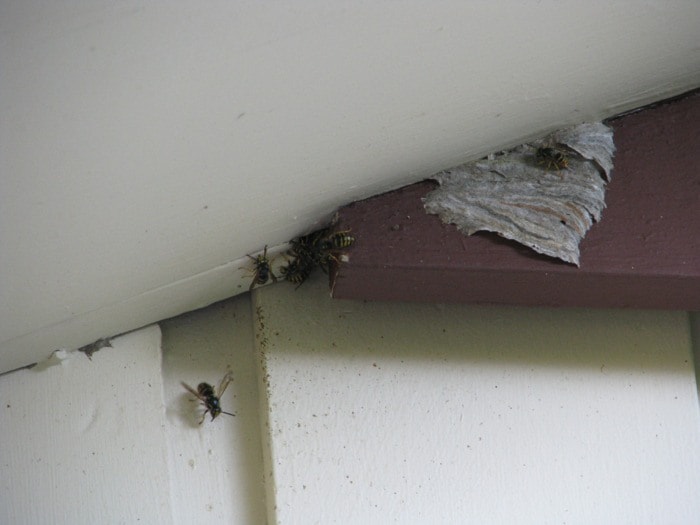'Tis coming up to that time of year. Yellowjackets will soon be helping themselves to ripening fruits.
It will also not be much longer before they start inviting themselves to family picnics and barbecue gatherings with friends.
Given this garden setting, many of us tend to view eusocial wasp species such as yellowjackets and hornets as nasty pests. Especially since some people develop potentially fatal reactions if they should be stung.
And trying to avoid being stung can be difficult due to the yellowjacket's propensity towards aggressive behaviour. Reason No. 2 for their relegation to the Pest Category.
But if you place covers over the food offerings, exercise caution when harvesting ripe fruits, keep your distance from their nests and take the time to observe, you will find they really do have a purpose in our ecosystem.
Yellowjackets, one of the most common stinging bee in our part of the world, is a predatory insect. They target caterpillars, spiders, flies and other insects...some harmful pests themselves, some beneficial...unfortunately.
Viewed from this angle, one gets a glimmer of how much help a yellowjacket can actually be in a garden.
Take a look at the size of the nest. Imagine how many young larvae may be housed within who all need regular feeding as they develop towards their pupating stage.
Co-relate that number against the number of pest insects that will be hunted by the workers to keep the larvae well-fed and well...their help in keeping pests at bay can be considerable.
My curiosity peaked, I looked through my reference library for some hard numbers on just how helpful a yellowjacket colony could be. It would have to be substantial to outweigh their pesky behaviour towards the gardener and garden visitors.
One reference I perused quoted an estimate of as much as 5,000 kilograms, or five metric tons, of insect pests can be consumed by a healthy, productive hive in one season.
A tad staggering to my way of thinking, logistically. Honestly, how much does a cabbage moth larvae weigh? It would have to be one heck of a huge hive.
Not sure whether anyone had ever had the tenacity or brevity to undertake counting the number of yellowjacket hive inhabitants, I searched further for more concrete numbers. Turns out a few have counted...at least roughly.
A mature colony can apparently house anywhere from 2,000 to 4,000 worker wasps, along with the one queen, oodles of eggs and hatched larvae.
Scientists do know yellowjacket queens lay about 100 eggs per day. Given that they become active sometime in April after hibernating all winter, a queen can generate quite a number of hungry larvae...all needing to be fed a diet of insects.
Reason No. 2 in the Friend Category: These types of bees are pollinators. Surprised?
In spring, first the queen and then the worker drones will often forage for pollen, a food source rich in protein, thereby assisting in pollinating many plant species. Something to keep in mind if you are contemplating removing that wasp nest, given that our honeybee populations are still being seriously impacted by whatever is causing the Colony Collapse Disorder (CCD).
The latest reports I have seen are laying a large portion of the blame for CCD on the use of systemic pesticides which are absorbed by the plant...and contained in all parts of the plant, including its pollen.
If this is indeed true...and it makes sense...then we may not have to worry about "harmful" yellowjackets. They will be annihilated, along with the honeybees.
Too bad.
I now know yellowjackets are doing a great job in keeping pest insects under control. Luckily, we garden organically so they will hopefully continue to thrive here. They are our friends...provided they build their hives in an out-of-the-way spot in the garden.
Have a gardening question? E-mail me at duchessofdirt@telus.net.
Leslie Cox co-owns Growing Concern Cottage Garden in Black Creek. Her column appears every second Friday.
